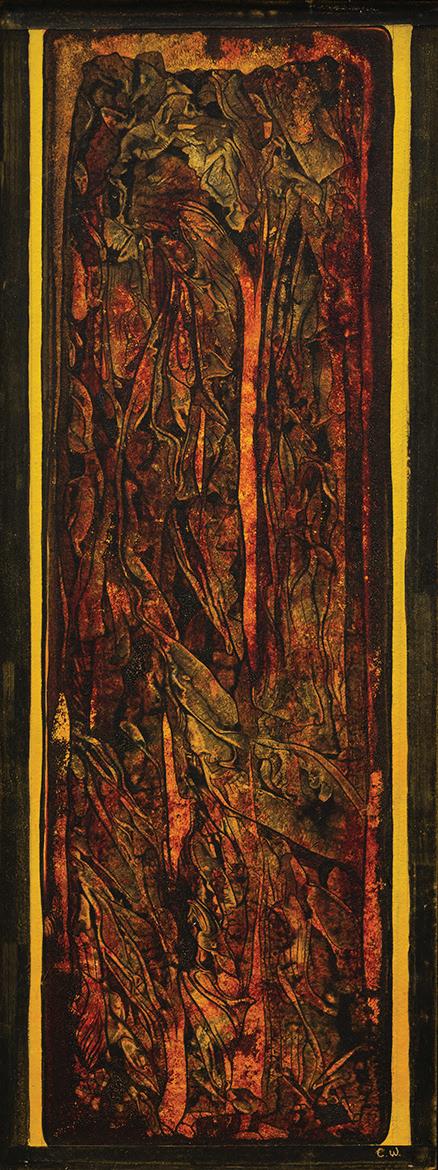SACRED GROUNDS:
SOUTHWEST WORKS ON PAPER
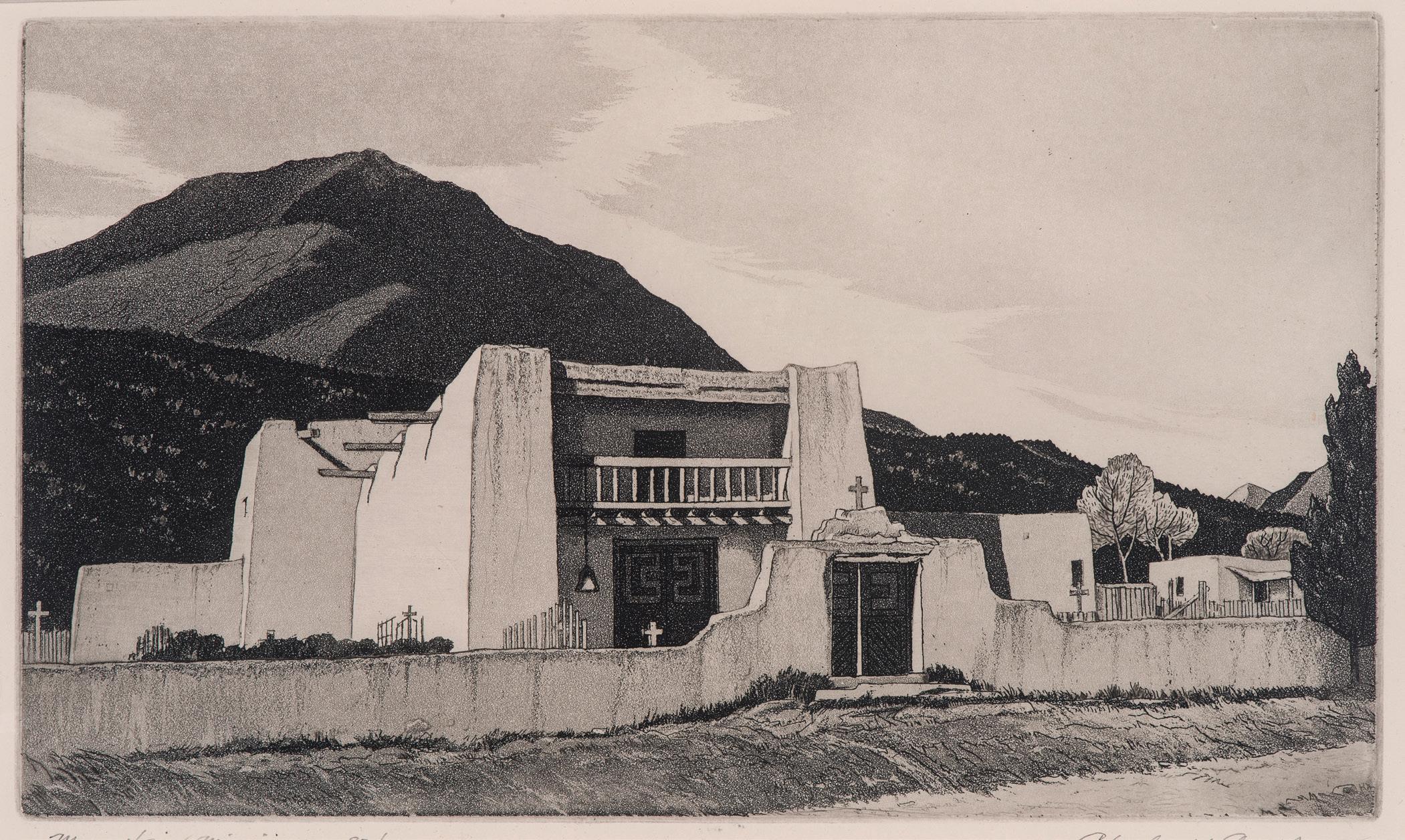
Sacred Grounds: Southwest Works on Paper
The American Southwest is universally recognized as a mecca for artists and visionaries. In the early 20th century, one by one, pioneering creatives, primarily hailing from the East Coast and Midwest, were lured, as if by magnetic force, to the majestic lands of New Mexico. Captivated by the radiant quality of the light, dramatic geological formations, expansive skies, rich multicultural traditions, historic Pueblo-style architecture, and quiet remoteness, master painters and printmakers have been nurtured and galvanized by the high desert landscape. LewAllen Galleries is pleased to present Sacred Grounds: Southwest Works on Paper, an exhibition highlighting the work of a diverse group of renowned artists, including: Edward Borein, Charles Capps, Howard Cook, Joan Foth, Clark Hulings, Raymond Jonson, Gene Kloss, Barbara Latham, Peter Moran, Daniel Morper, Doel Reed, Olive Rush, and Cady Wells.
At the crossroads of Indigenous, Hispanic, and Anglo cultures, New Mexico boasts wide open spaces, an implicit sense of freedom, and an instinctive outlaw attitude. Artists seeking respite from crowded cities were able to bask in its relative solitude. The hallowed lands here engendered broad experimentation and an opportunity to veer away from aesthetic trends and market pressures. During the 20th century, the Southwest environment was also considerably welcoming towards independent women and free spirits of all sorts. Northern New Mexico, particularly Santa Fe and Taos, has long been a hub of creative activity.
Artists, writers, musicians, actors, and filmmakers continue to flock to this region to live amongst nature and hone their distinct crafts. By taking time to commune deeply with their surroundings, artists are able to transmute the essence of the arid landscape into a fertile breeding ground for unbridled expression. As seen in this exhibition, the ingenious results are brimming with unparalleled imagination and masterful depictions of desert life and its inhabitants.

Edward Borein (1872–1945)
Edward Borein is unique amongst early Western artists as having actually been born in the West. Although most well-known for his exquisite etchings, watercolors, and drawings, Borein began his career not as an artist but as a cowboy. He roamed the Western states and territories and worked on the land for two decades before moving to New York City to pursue a career as a professional artist. Borein’s works of art were nostalgic artistic representations of the Western lifestyle, and his most notable themes were of Native Americans and cowboys.
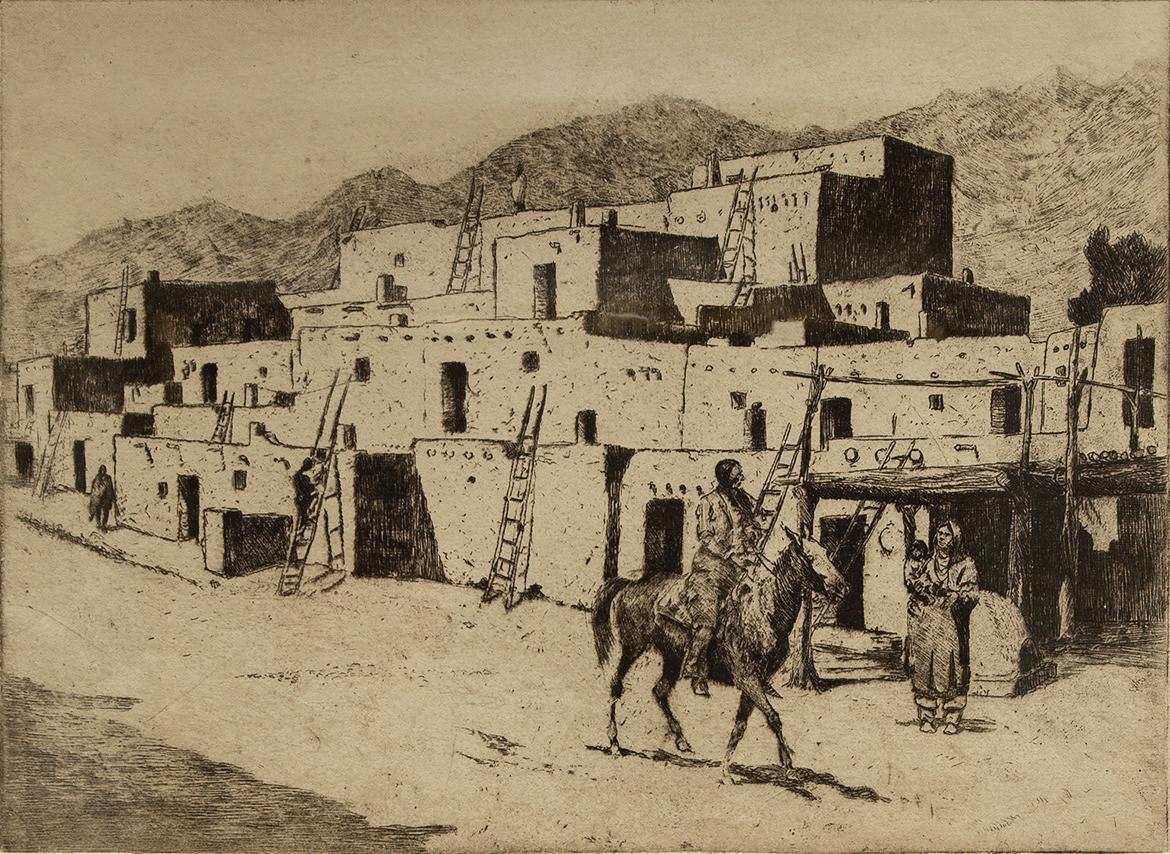
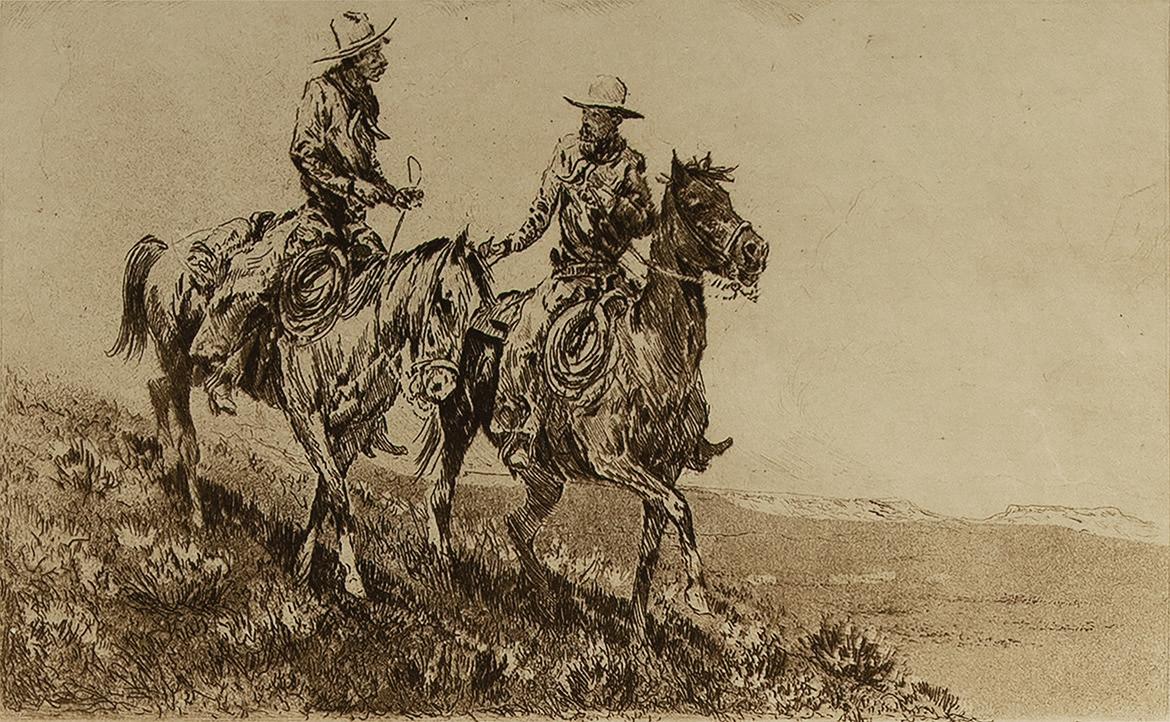
Charles Capps (1898–1981)
Charles Capps is recognized as an accomplished 20th century printmaker, who is especially known for the subtle tonal variations in his aquatints. The subject matter of Capps’ work centers on the Midwest and the Southwest; he was particularly interested in the adobe architecture of Taos and Santa Fe. Capps created his own plates and used each for editions of about 100, which he signed and numbered in pencil. In total, he completed about 80 prints, of which half are aquatints, a third are etchings, and the remaining are woodblock prints and lithographs.
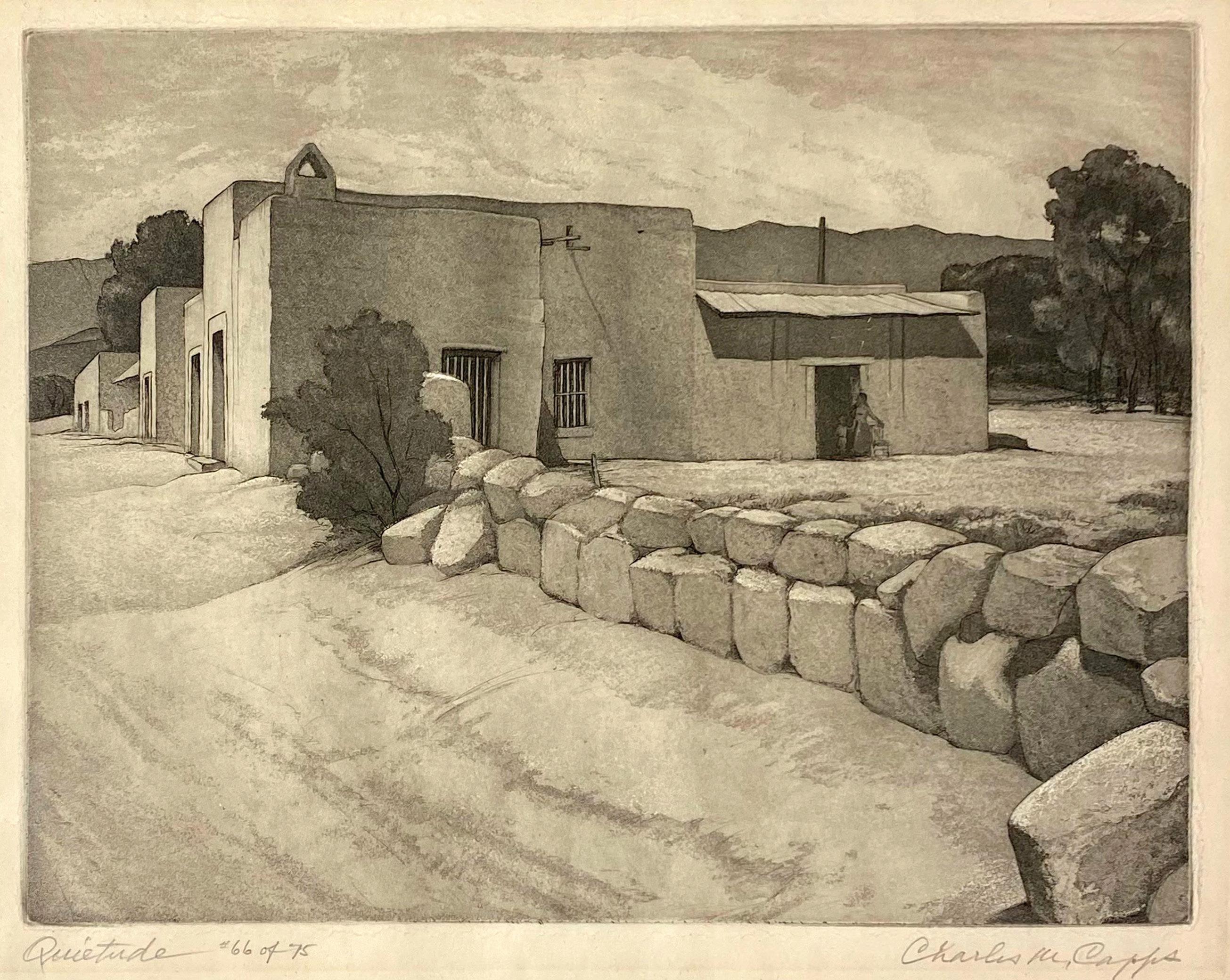
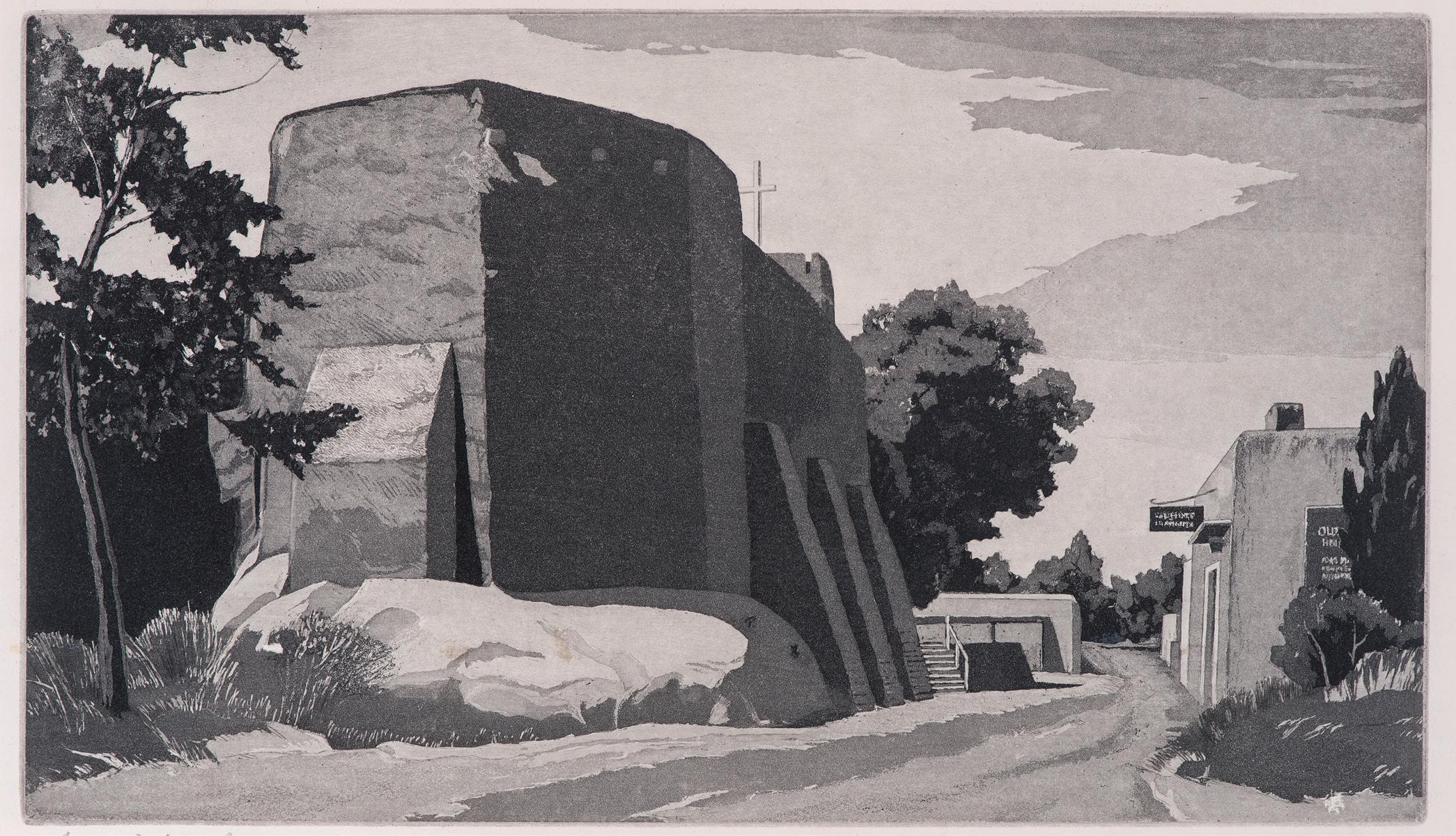

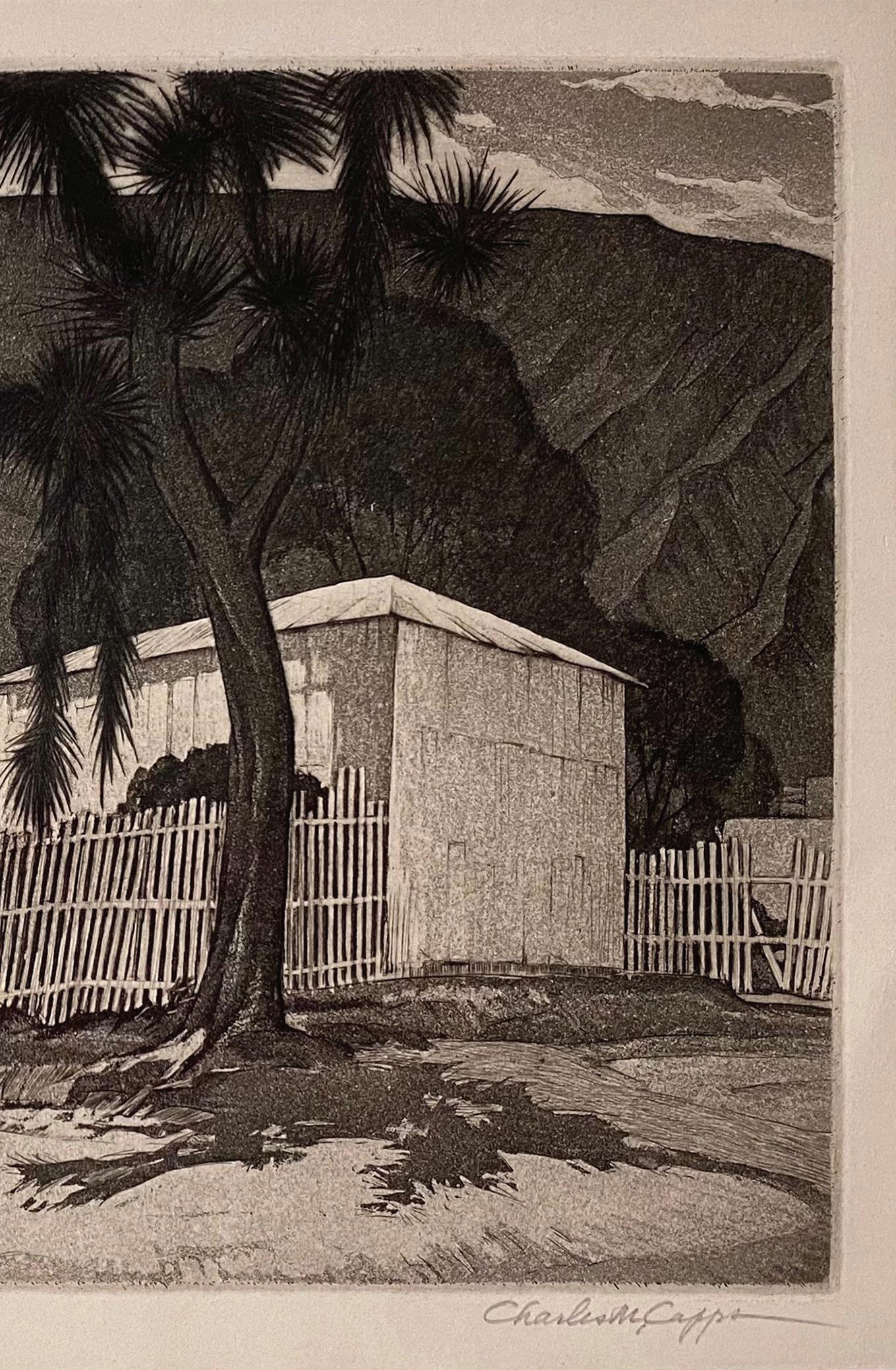
Howard Cook (1901–1980)
Howard Cook devoted a decade of his life to the art of printmaking. He mastered and produced outstanding examples of each of the major mediums–etching, aquatint, woodcut, wood engraving, and lithography. Later in life, he turned to murals, pastel drawings, watercolors, and finally to oils and collages.
Cook first came to Taos, New Mexico, in 1926 when he was commissioned by the magazine Forum to create a series of woodcuts to illustrate author Willa Cather's Death Comes for the Archbishop. There he met fellow artist Barbara Latham, whose work is also featured in this exhibition. Cook and Latham were married in Santa Fe in 1927. They traveled together for eight years before settling in Talpa, a tiny village south of Taos. In 1976, they settled in Santa Fe.

Joan Foth (1930–2010)
Joan Foth’s panoramic watercolors are highly regarded for capturing the quiet majesty of the New Mexico landscape. Living alone in the remote town of Chimayó in Northern New Mexico, Foth demonstrated an extraordinary facility with watercolor painting. Foth depicted legendary mountain vistas with sumptuous colors bespeaking the graceful palette for which New Mexican sky, clouds, and mountains are renowned. It was said that Foth had a remarkable grasp of the unique atmospherics of the high desert landscape and was called “the O’Keeffe of watercolor.”
Unique in her softened almost vague interpretations, Foth believed that when painting nature, one must give it up at some point and then create something parallel to nature. She felt that, in her work, the line between representational and abstract-representational painting merged and became one.
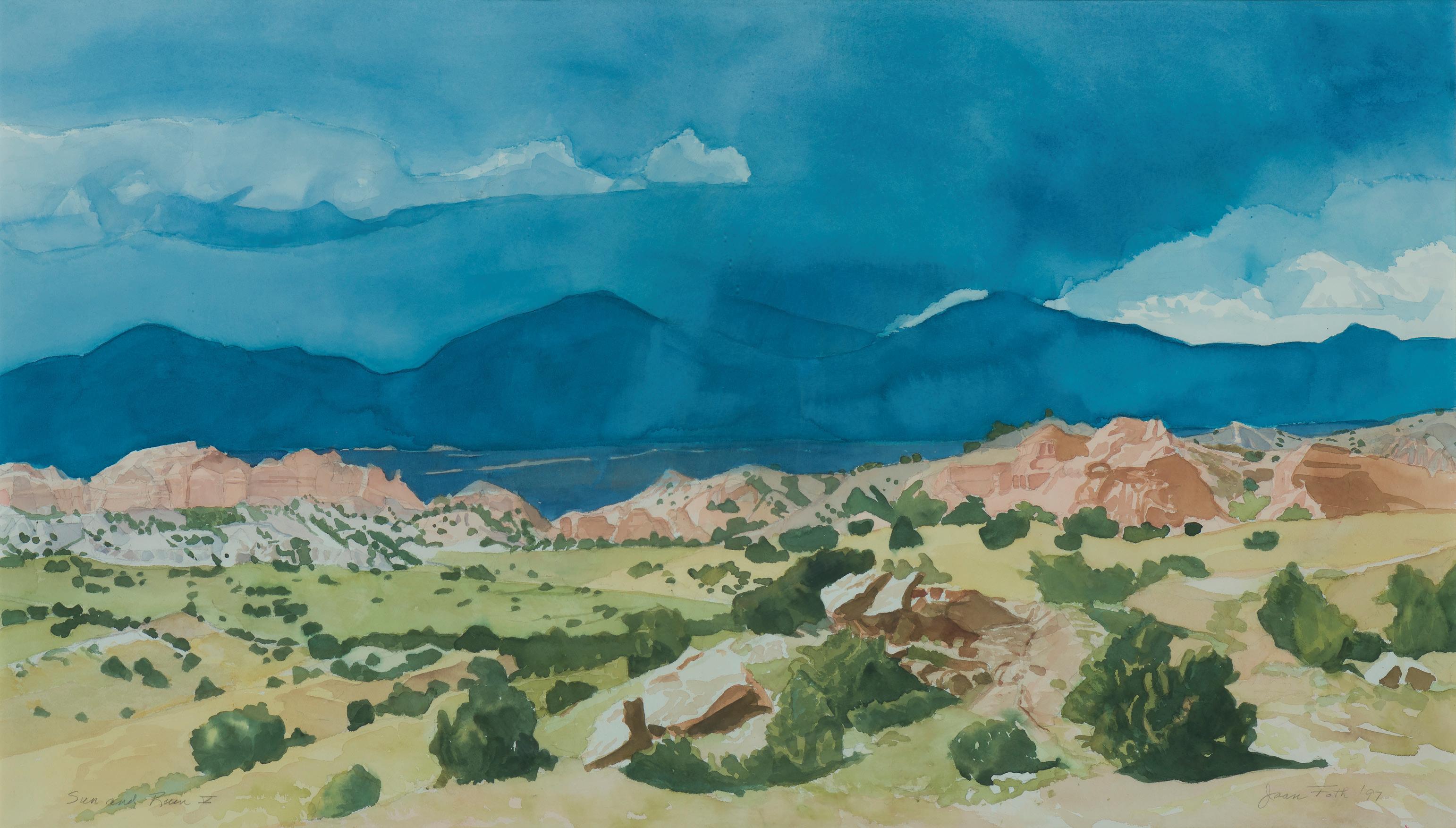
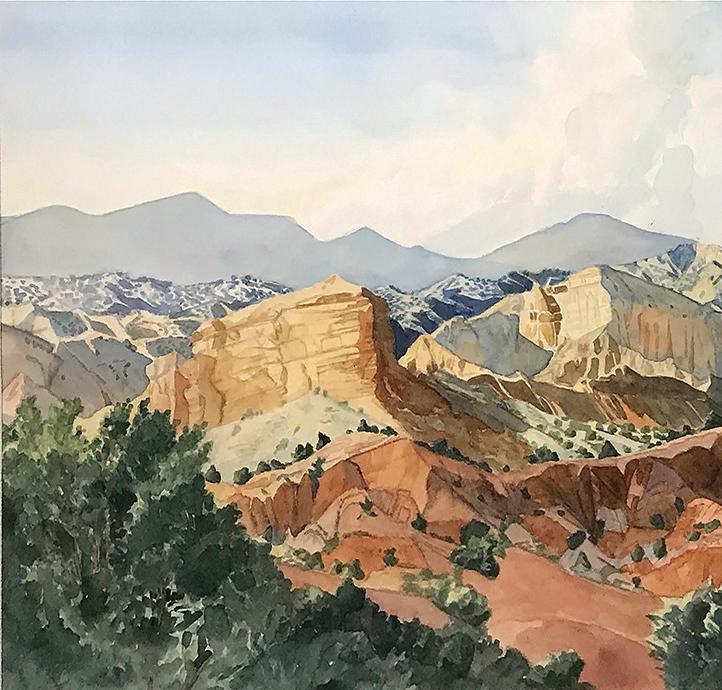

Clark Hulings (1922–2011)
Clark Hulings is recognized as a leading American realist painter. Hulings captures his subject with impeccable technique, and his paintings glow with remarkable light, color, and texture. His preference for painting the rustic and provincial scenes of everyday life is apparent in his beautiful interpretations of the open-air markets, farms, and countryside. In addition to landscapes and portraits, Hulings was also interested in design and illustration. Using pencil and ink, Hulings would often work out visual studies on paper before finalizing the idea as a painting.

Raymond Jonson
Raymond Jonson is highly regarded as an innovative American Modernist painter who focused, in particular, on paintings of the Southwest. In 1922, Jonson first visited New Mexico; it was a pivotal trip that would change the course of his life and career. After a brief visit to Santa Fe, Jonson’s experiences inspired him to move to New Mexico two years later. As co-founder of the Transcendental Painting Group in 1938, Jonson was instrumental in developing a distinctively elevated vision of the New Mexico landscape, promoting abstraction that was imbued with spirituality. The Transcendental Painting Group “sought to carry painting beyond the appearance of the physical world, through new expressions of space, color, light, and design."

Gene Kloss (1903–1996)
Gene Kloss is acknowledged as one of the major 20th century American printmakers. In particular, Kloss is recognized for both her New Mexico landscapes and her images of the Pueblo peoples and the secretive Spanish religious group, the Penitentes (both groups of which Kloss personally befriended). While Kloss worked in a variety of media over the course of her 70-year career, she is most known for her extraordinary work in printmaking.
Kloss received widespread recognition beginning in the 1930s. A member of the Taos Art colony, she produced a series of prints for the Public Works of Art Project and the Works Progress Administration, images of Pueblo ceremonies as well as those of the Spanish Penitentes. Of her art, ArtNews wrote, “Gene Kloss is one of our most sensitive and sympathetic interpreters of the Southwest.” Kloss was the first woman to be inducted into the National Academy of Design as a printmaker.
Working in black and white, Kloss recorded the landscape and people of New Mexico without appearing overly sentimental or maudlin. Whether conveying religious or quotidian subjects, Kloss imbued each of her images with extraordinary sensitivity and nuance using rich blacks, shifting fields of gray, and an unusual level of detail. Kloss would often say, “In this country, everything lifts—the trees, the mountains, the sky.”
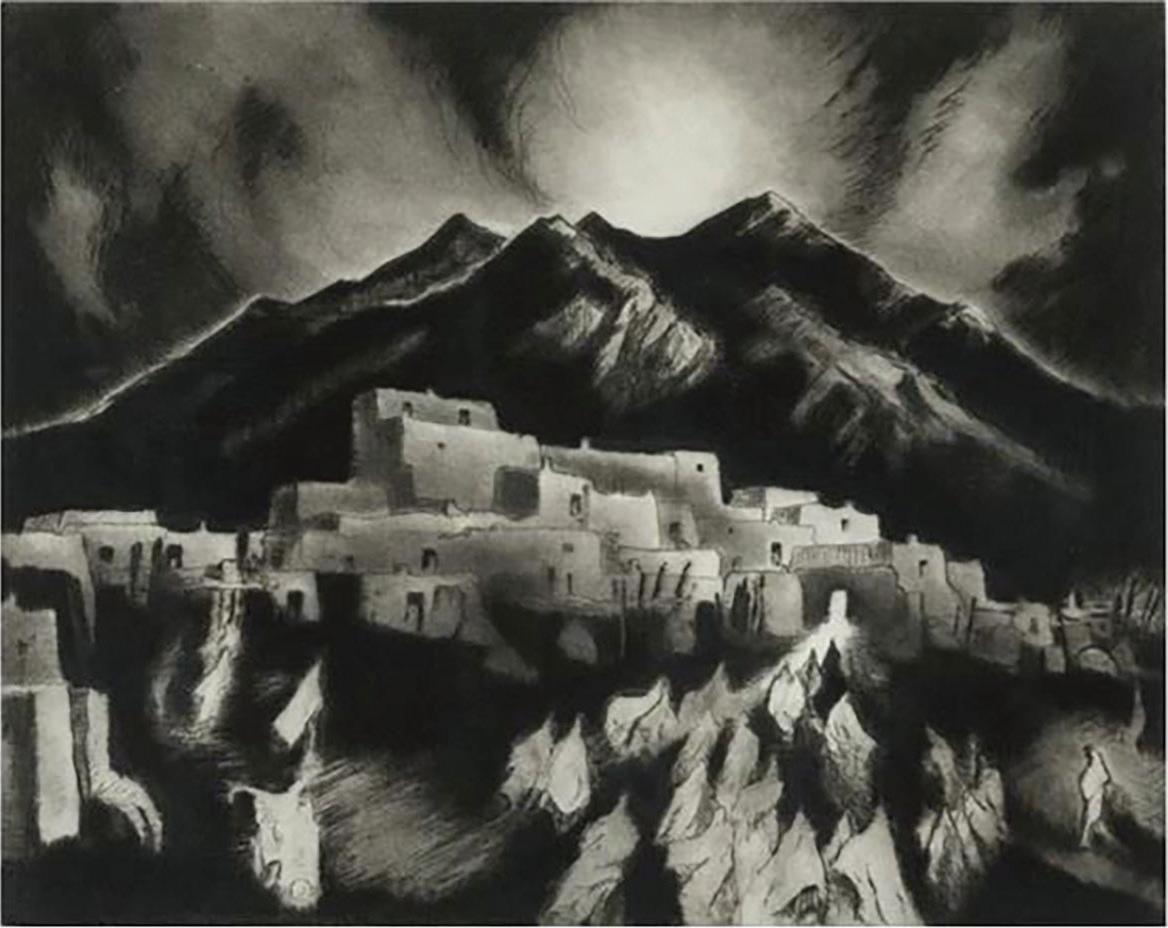
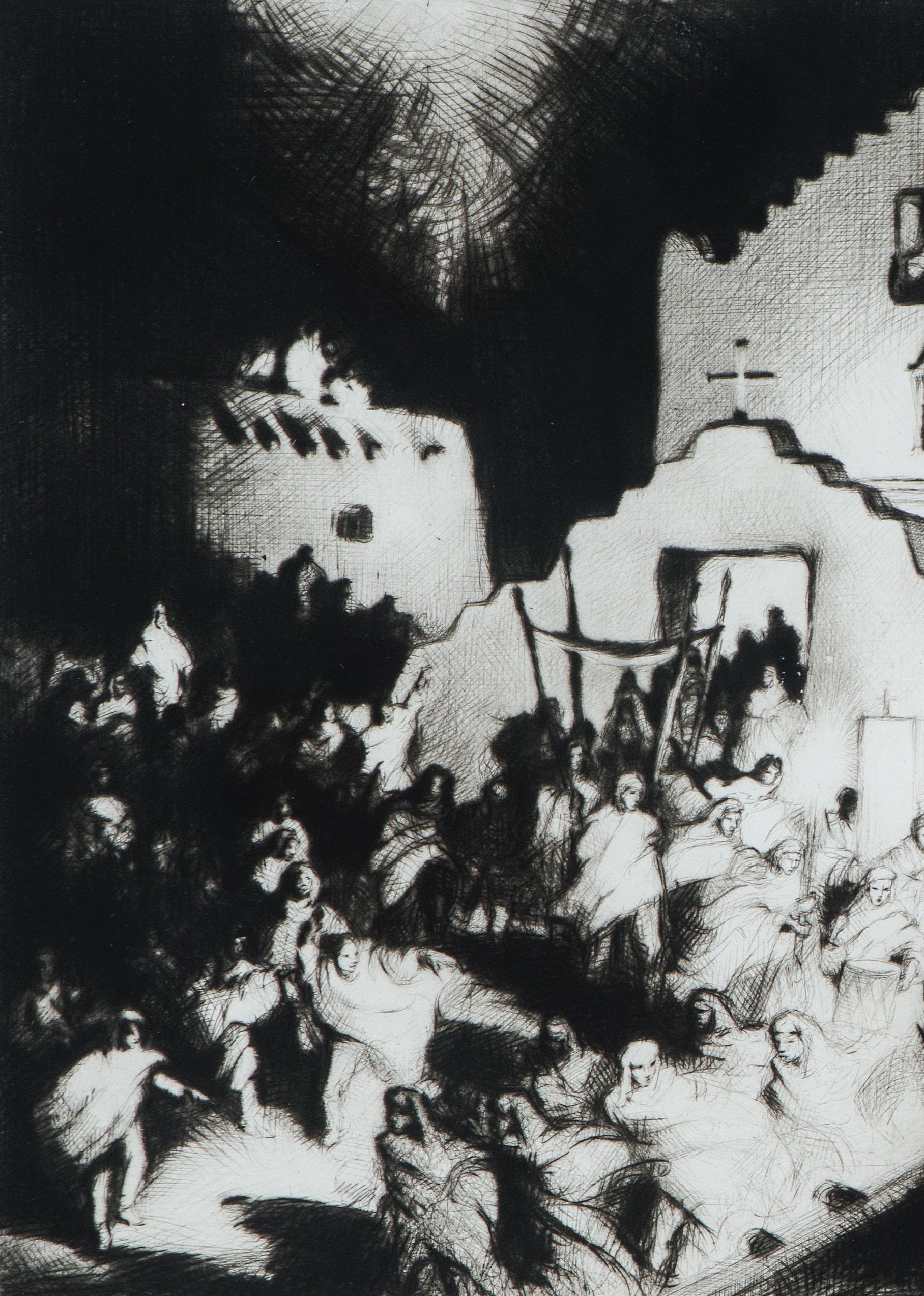

Gene Kloss (1903–1996)
Young Apache Wife (Ed. of 35), 1954
Etching on paper, 12 x 9 inches
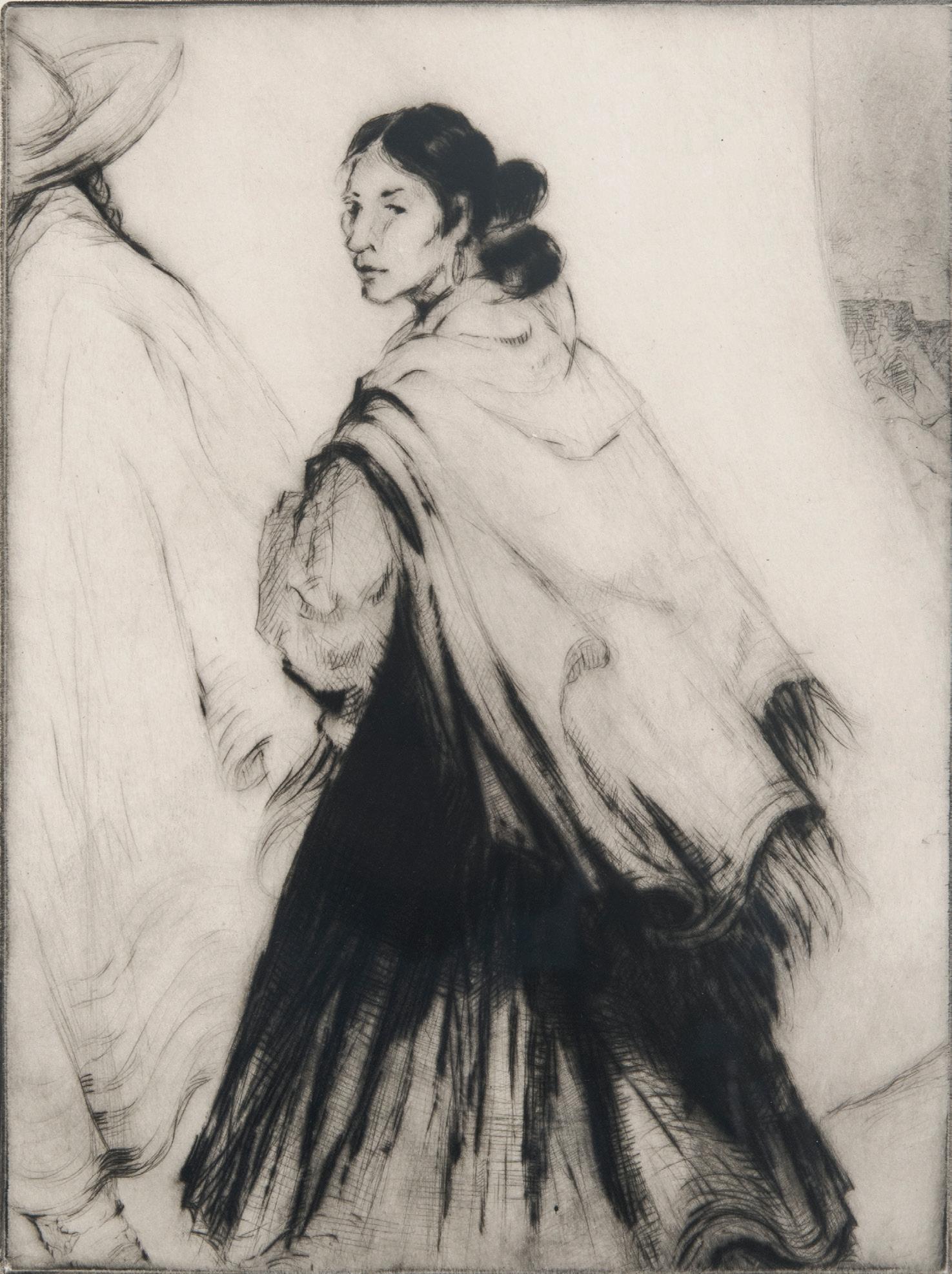


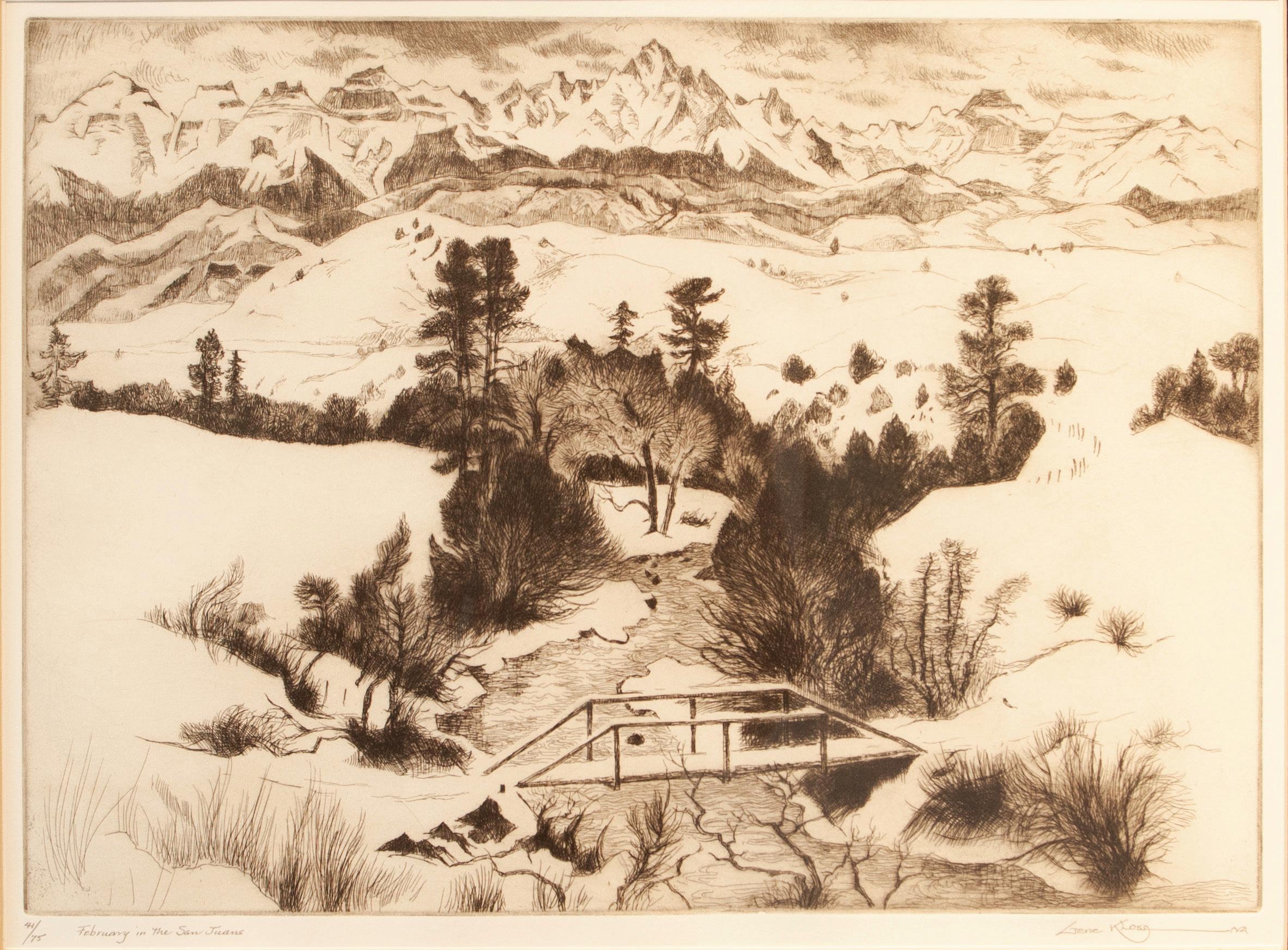
Barbara Latham (1896–1989)
Barbara Latham is a well-regarded American printmaker, painter, and a children's book illustrator. In her woodcuts, lithographs, and paintings, Latham focused on New Mexico subjects: the high desert landscape, views of Taos, and the local Norteño people. Latham was also celebrated for her children’s book illustrations; notably, Maggie was selected by the American Institute of Graphic Arts as being one of the best books from 1945-50.
In 1925, Latham went to Taos, New Mexico, for the first time to seek material for illustrations for a greeting card company. In 1926, she met artist Howard Cook, whose work is also featured in this exhibition. The couple married in 1927. From 1928 to 1935, they traveled widely including New England, Mexico, and France. In 1933, the couple made their home near Taos. In 1976, they settled in Santa Fe.

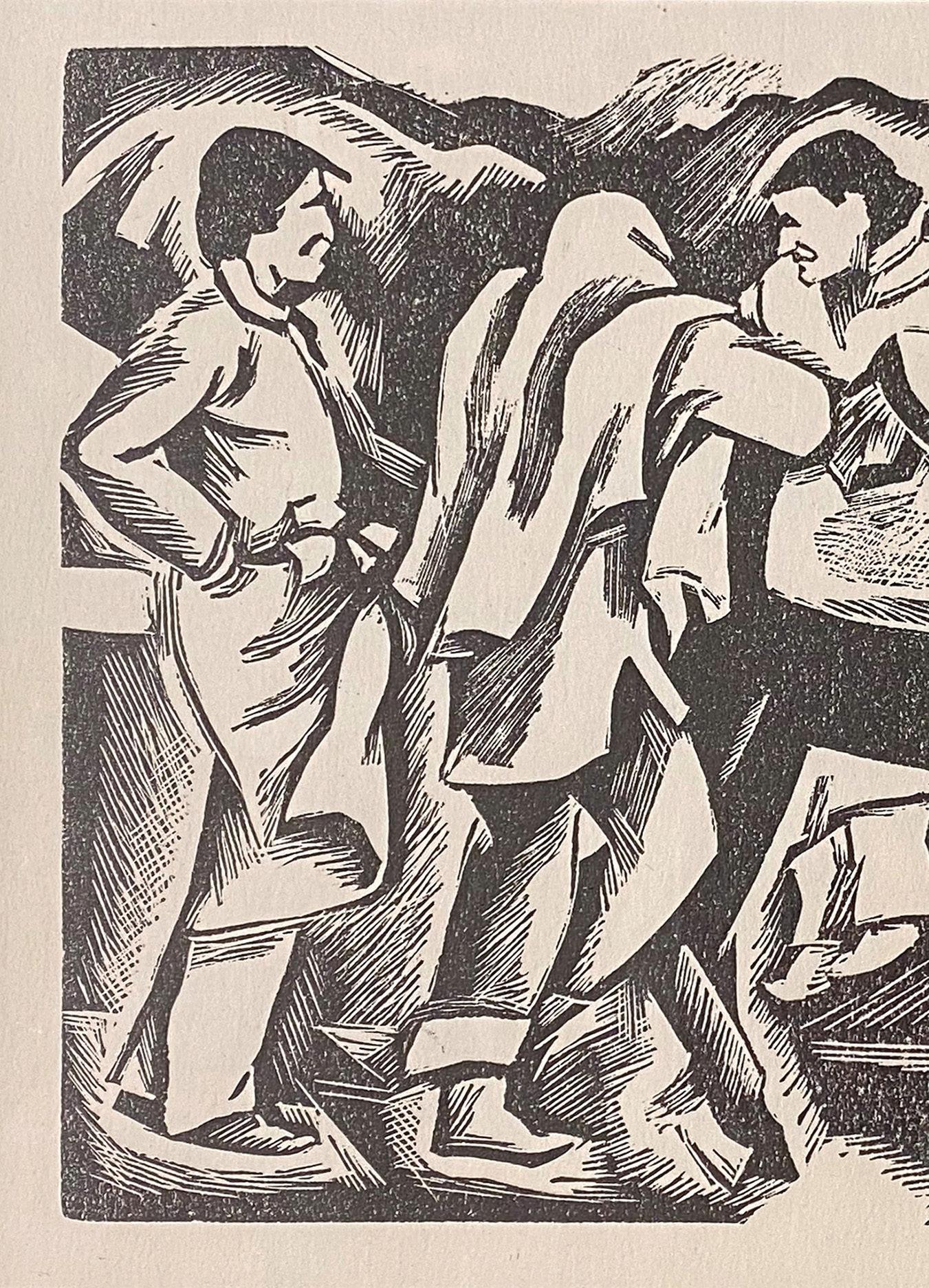
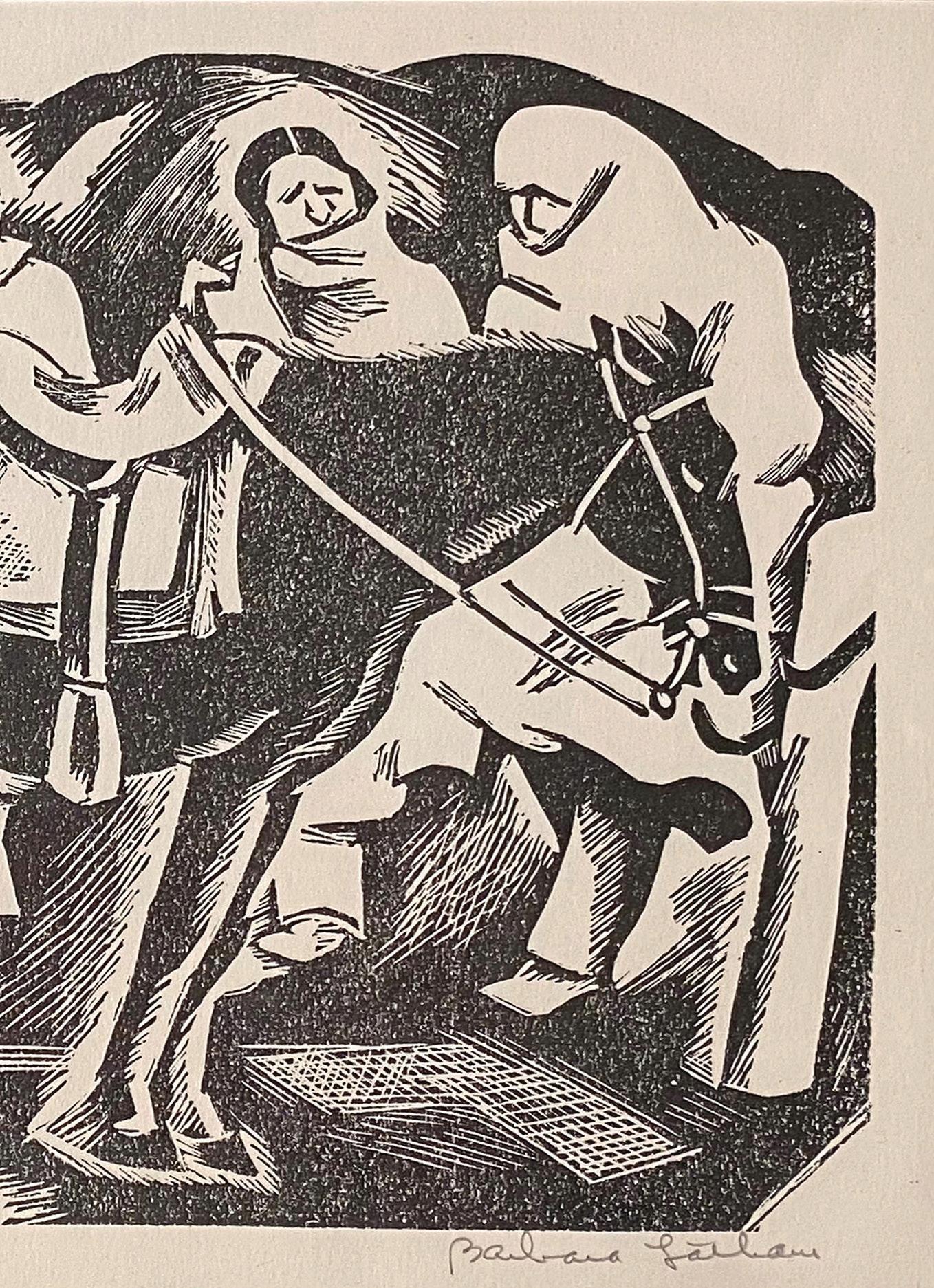
Peter Moran (1841–1914)
Peter Moran was an accomplished painter and printmaker who favored illustrating landscapes and animals. Moran was mainly influenced by his well-known artist brother, Thomas Moran, as well as French painter, Rosa Bonheur, known for her realistic depictions of horses. Moran kept a studio in Philadelphia and traveled to the Southwest starting in 1864. He continued to travel to New Mexico on annual ethnographic trips studying the Pueblo Indians. Today, he is considered the “Father of American etchers.”

Daniel Morper (1944–2016)
Landscape painter Daniel Morper has earned acclaim for his naturalistic, light-saturated images of such diverse scenes as views upward into the skies above Manhattan, scenic panoramas of the badlands and canyons of the American West, and nostalgic paintings of rural landscapes and townscapes. Well-known art critic and historian Peter Frank mused, “Morper has a knack for finding the spectacular in the mundane… emphasizing – but not exaggerating – the skew of a vantage, the force and weight of a horizon, the surprise and poignancy of an object silhouetted against a sky.” By combining a pre-modernist regard for nature with a modernist’s search for elemental vision and post-modern exactitude, Morper has, in Frank’s view, “helped to bring about a veritable renaissance in American landscape painting.”


Doel Reed (1895–1985)
Doel Reed achieved an international reputation his Southwest landscapes, to which he was inexorably drawn during numerous visits to Northern New Mexico. Reed is also remembered as an important member of the Taos art community after 1960. His paintings, drawings, and aquatints were earth-toned and geometric in style and focused on the architectural forms of the New Mexico landscape.
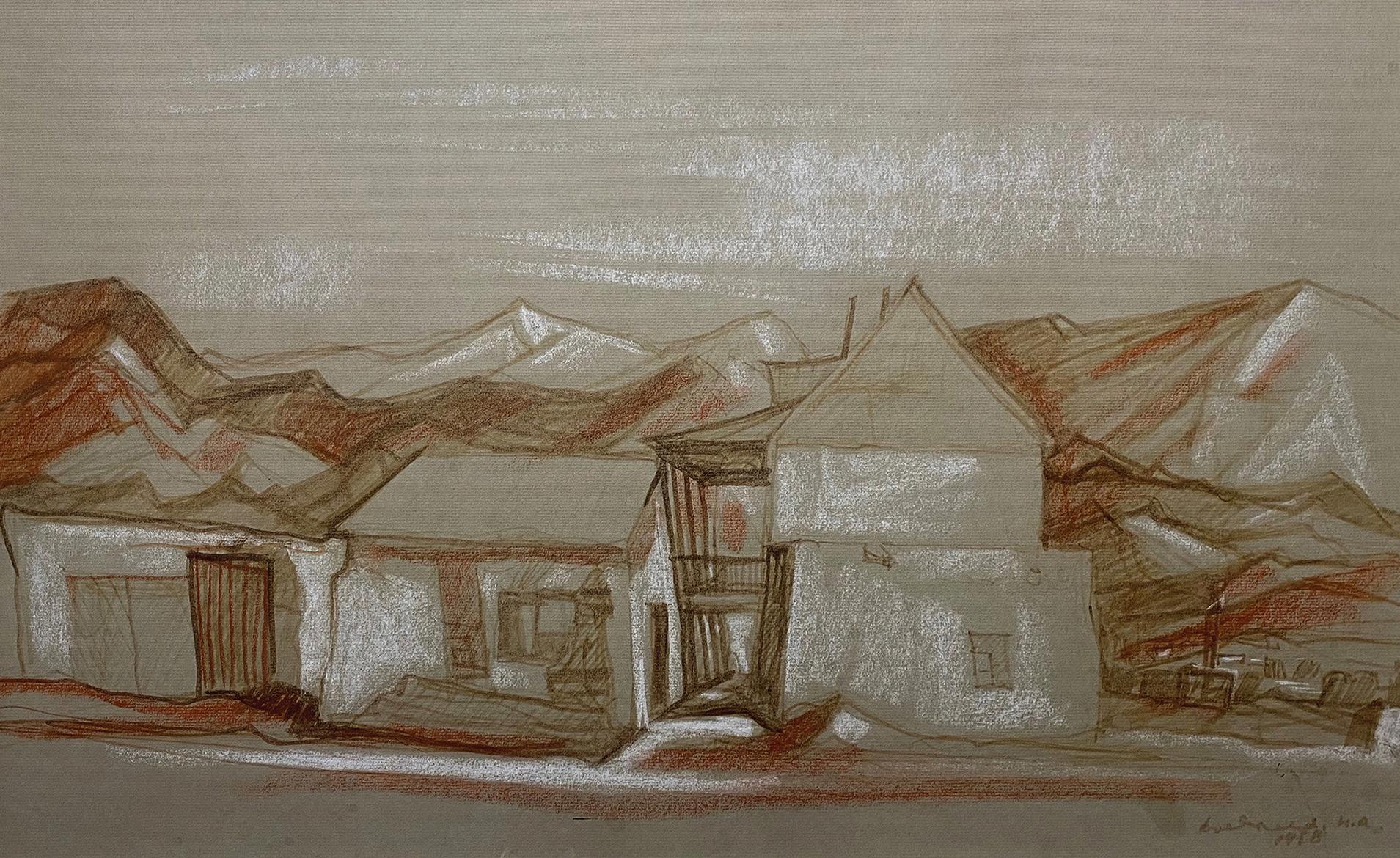
Olive Rush
Olive Rush is recognized as “the first important American woman artist to settle in Santa Fe.” Rush was a prominent painter, illustrator, muralist, and a pioneer in Native American art education during the early 20th century. Rush’s choice of subject matter is deeply influenced by the people, places, and wildlife of the Southwest. In 1914, Rush accompanied her Quaker minister father on a mission trip to New Mexico and Arizona, and subsequently, she was invited to have a one-person exhibition at the Palace of the Governors in Santa Fe. She made several visits to New Mexico over the next few years and moved permanently to Santa Fe in 1920. Despite the relative isolation of Santa Fe, Rush continued to actively produce work and contribute to national and international shows over the next thirty years, which culminated in a retrospective at the Museum of New Mexico Art Gallery in 1957.
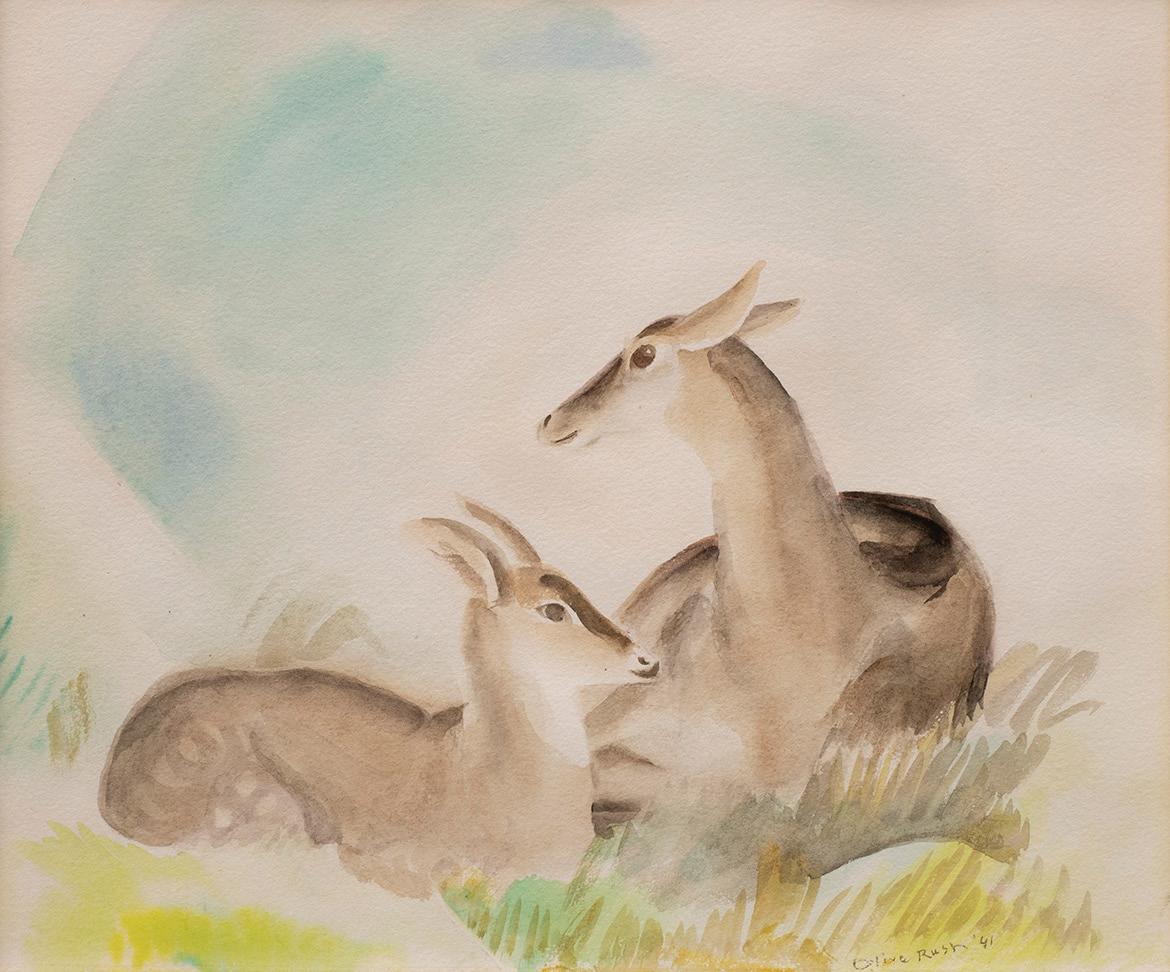
Cady Wells
Cady Wells is recognized as a masterful 20th century American painter. Wells is also noted as a generous patron to the arts. In 1932, he arrived in New Mexico and began studying with Andrew Dasburg, who became his mentor for the next several years. Wells learned the landforms by walking and observing the mountains, mesas, and driftwood. Portraying the Southwestern landscape, Wells moved through various modernist idioms. His early work incorporated gestural, calligraphic lines suggestive of Chinese ideograms. Later, he investigated the structure of natural forms and the pattern-like appearance of the landscape. Influenced by Dasburg, Raymond Jonson, and Georgia O'Keeffe, Wells developed a personal semi-abstract style that brought considerable praise from his peers. Generations later, Wells’ work still retains freshness and vibrancy.

Cady Wells (1904–1954)
The Chasm, 1953
Mixed media on paper, 12 x 4.5 inches
